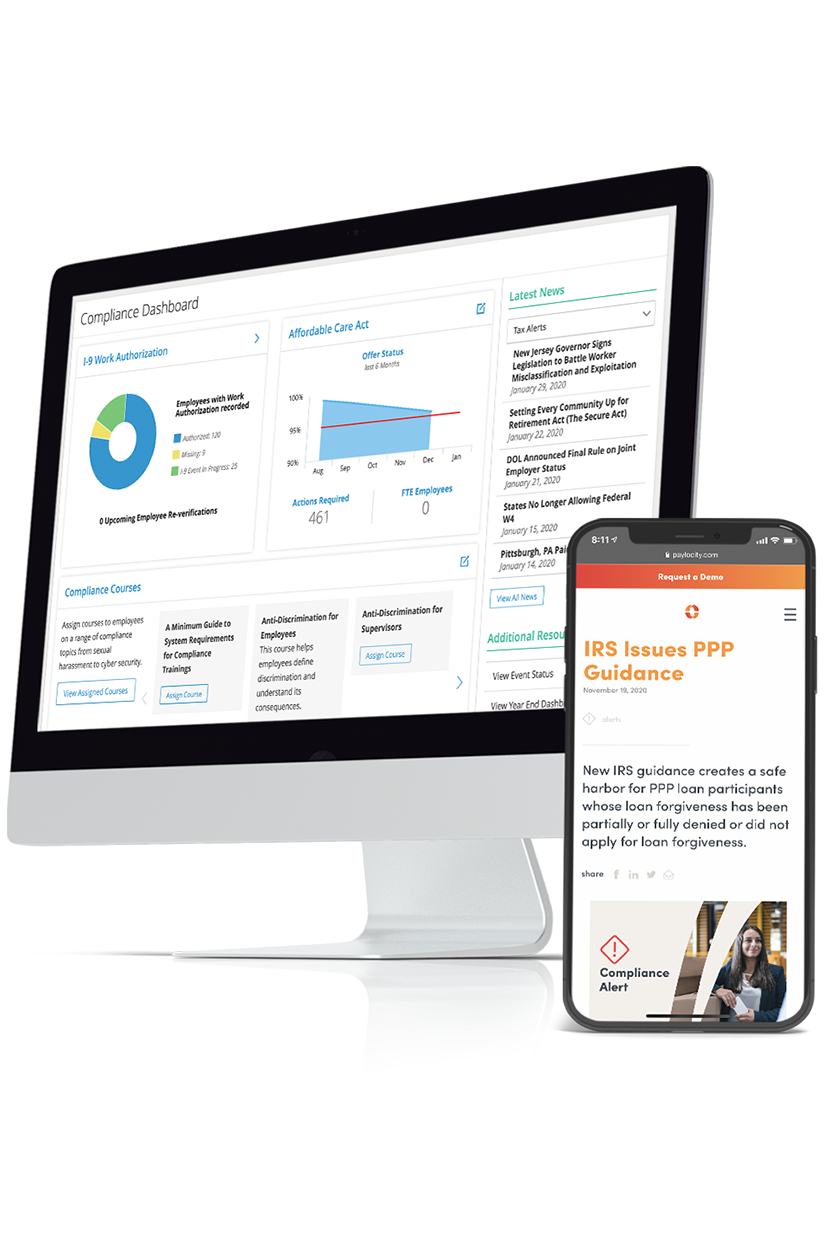resources
Chicago, Illinois Paid Leave and Paid Sick Leave Ordinance
November 15, 2023
On November 9, 2023, the Chicago City Council signed a new paid time off ordinance, the Chicago Paid Leave and Paid Sick and Safe Leave Ordinance. This new ordinance replaces the Chicago Paid Sick Leave Ordinance and will become effective on July 1, 2024.

At A Glance
- Effective July 1, 2024
- Employers must provide two leave policies to employees working in the city of Chicago
- Paid Leave
- Paid Sick Leave
- Employees will be eligible for 40 hours of Paid Leave
- Employees will be eligible for 40 hours of Paid Sick Leave
Introduction
On December 13, 2023, the Chicago City Council voted to delay the implementation of its Paid Leave and Paid Sick and Safe Leave Ordinance until July 1, 2024.
On November 9, 2023, the Chicago City Council signed a new paid time off ordinance, the Chicago Paid Leave and Paid Sick and Safe Leave Ordinance.
Eligibility
Any employer who employs at least one person must comply with this ordinance. An eligible employee means an employee who, in any particular two-week period, performs at least two hours of work for an employer while physically present within the geographic boundaries of the city.
For purposes of this definition, time spent traveling in the city that is compensated time, including, but not limited to, deliveries, sales calls, and travel related to other business activity taking place within the city, shall constitute work while physically present within the geographic boundaries of the city. However, time spent traveling in the city that is uncompensated commuting time shall not constitute work while physically present within the geographic boundaries of the city.
“Covered Employee” includes all Domestic Workers regardless of whether they work as employees, independent contractors, sole proprietors, or partnerships.
Accrual Requirements
Beginning July 1, 2024, the new ordinance requires that eligible employees earn two types of paid time off: Paid Leave and Paid Sick Leave. Employers may choose an accrual or frontloading method, but both leave policies must accrue in hourly increments only (i.e., fractional accrual isn’t permitted).
Leave Type | Accrual Rate | Use Limit | Yearly Accrual Cap | Probationary Period | Annual Carryover |
Paid Leave | 1 hour for every 35 hours worked | None | 40 hours | 90th day of employment |
|
Paid Sick Leave | 1 hour for every 35 hours worked | None | 40 hours | 30th day of employment | Up to 80 Hours |
Note: The new ordinance requires employers to allow the carryover up to 80 hours of Paid Sick Leave to the next 12-month benefit period, regardless of whether the employer frontloads the sick time at the start of the 12-month benefit period or grants the sick time on an accrual basis throughout the 12-month benefit period.
Employers may set a reasonable minimum use limit not to exceed four hours for Paid Leave and/or two hours for Paid Sick Leave per day. Eligible employees shall be allowed to determine how much accrued Paid Leave and Paid Sick Leave they need to use per occurrence.
Rate of Pay
Paid Leave and Paid Sick Leave shall be compensated at the same rate and with the same benefits, including health care benefits, that the eligible employee regularly earns during hours worked. This doesn’t include overtime pay, premium pay, gratuities, or commissions.
Note: The minimum hourly pay shall not be less than the base hourly wage, the federal minimum wage, the Illinois Minimum Wage, or the Chicago Minimum Wage, whichever is higher.
Paid Leave Exemption for Small Employers
The Ordinance does specify a distinction between a small and medium employer, due to the payout obligations an employer may have for just the Paid Leave component of the benefit time.
A small employer (i.e., anyone with 50 or fewer eligible employees) is exempt from this requirement and isn’t required to pay out any accrued Paid Leave that would otherwise be required.
A medium employer (i.e., anyone with 51 - 100 eligible employees) has a modified exemption for purposes of the payout requirement at termination of accrued Paid Leave. For the first year that the ordinance is in effect, a medium employer will only have to pay out a maximum of 16 hours of accrued Paid Leave until July 1, 2025, at which point, this category of employers will be required to pay the full balance of any accrued Paid Leave.
Unless otherwise provided by a collective bargaining agreement, all other employers are required to pay the monetary equivalent of all unused, accrued Paid Leave as part of the employee's final compensation at the employee's final rate of pay.
Acceptable Uses
Under this Ordinance, Paid Leave and Paid Sick Leave have different use requirements.
Paid Leave Use Requirements
An eligible employee may use Paid Leave for any reason of their choosing. An employer may not require an eligible employee to provide a reason for such leave and may not require them to provide documentation or certification as proof or in support of the leave.
Paid Sick Leave Use Requirements
An eligible employee may use Paid Sick Leave when:
- The eligible employee is ill or injured, or for the purposes of receiving professional care (including preventative care, diagnosis, or treatment), for medical, mental, or behavioral issues, including substance use disorders.
- An eligible employee’s family member is ill, injured, or ordered to quarantine, or to care for a family member receiving professional care (including preventative care, diagnosis, or treatment), for medical, mental, or behavioral issues, including substance use disorders.
- The eligible employee or an eligible employee’s family member is the victim of domestic violence, a sex offense, or sex trafficking.
- The eligible employee’s place of business is closed by order of a public official due to a public health emergency, or the eligible employee needs to care for a family member whose school, class, or place of care has been closed.
- The eligible employee obeys an order issued by the Mayor, the Governor of Illinois, The Chicago Department of Public Health, or a treating healthcare provider, requiring the eligible employee to:
- Stay at home to minimize the transmission of a communicable disease;
- Remain at home while experiencing symptoms or sick with a communicable disease;
- Obey a quarantine or isolation order
If an eligible employee's need for Paid Sick Leave is reasonably foreseeable, an employer may require up to seven days notice before leave is taken. If the need for Paid Sick Leave is not reasonably foreseeable, an employer may require an eligible employee to give notice as soon as is practicable on the day the eligible employee intends to take Paid Sick Leave by notifying the employer.
Existing Policies
If an employer has a policy that grants employees Paid Leave or Paid Sick Leave in an amount and manner that meets or exceeds the requirements of this Ordinance, the employer isn’t required to provide additional Paid Leave or Paid Sick Leave.
Employers offering an unlimited paid leave policy to covered employees must pay the equivalent of 40 hours of paid time off, less any hours of Paid Leave used in the 12-month period before separation from employee. If the employee used more than 40 hours in the 12-month period, no compensation is required.
Notice Requirements
Every employer shall post, in a conspicuous place at each facility where any eligible employee works that is located within the geographic boundaries of the city, a notice advising the eligible employee of their right to paid time off under this Ordinance. The agency will provide the notice on their website.
With the first paycheck issued to an eligible employee, and annually with a paycheck issued within 30 days of July 1, every employer shall provide a notice advising the eligible employee of their right to paid time off under this Ordinance.
Each time wages are paid, an employer shall provide each eligible employee with written notification stating an updated amount of Paid Leave and Paid Sick Leave available to each employee and the accrual rates of the Paid Leave and Paid Sick Leave.
Employers may choose a reasonable system for providing this notice, including, but not limited to, listing available paid time off on each pay stub or by using an online system where the eligible employees can access their own Paid Leave and Paid Sick Leave information.
For more information on Illinois wage and payroll tax laws, check out our Illinois Wage and Payroll Tax Facts page.
Next Steps
We expect the Chicago Business Affairs and Consumer Protection Department to provide additional guidance, along with the mentioned notice, in the coming months. Paylocity will have the accrual requirements set up with our system prior to July 1, 2024.
Please work with your Account Manager if you have questions about how to add a time off type or approve time off.
Thank you for choosing Paylocity as your Payroll Tax and HCM partner.
This information is provided as a courtesy, may change and is not intended as legal or tax guidance. Employers with questions or concerns outside the scope of a Payroll Service Provider are encouraged to seek the advice of a qualified CPA, Tax Attorney or Advisor.

Keep Up With Compliance
Between constantly changing employment laws and updates to the Affordable Care Act (ACA), keeping your workplace compliant can be a time-consuming and costly challenge. Eliminate the stress and stay up to date with our Compliance Dashboard. View compliance alerts and get a bird’s eye view of what you need to do to avoid fines and penalties.
